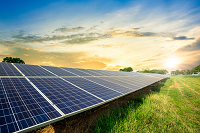In A World Grappling With The Consequences Of Climate Change, Off-Grid Solar Systems Have Emerged As A Beacon Of Hope For Those Seeking To Reduce Their Carbon Footprint While Gaining Energy Independence. However, One Key Consideration That Often Lingers In The Minds Of Potential Adopters Is The Cost Associated With Setting Up And Maintaining Such Systems. In This Exploration, We Delve Deep Into The Intricate Web Of Off-Grid Solar System Cost, Unraveling The Components, Variables, And Factors That Determine This Intriguing Balance.
Understanding The Foundation
To Embark On This Journey, It's Crucial To Establish A Foundation. An Off-Grid Solar System Is Essentially A Self-Sufficient Power Generation Unit That Operates Independently Of The Conventional Power Grid. It Harnesses Sunlight Through Solar Panels And Converts It Into Electricity, Which Is Then Stored In Batteries For Use During Periods Of Low Or No Sunlight. This Self-Reliant Approach To Energy Production Promises Not Only Environmental Benefits But Also Energy Security. However, The Initial Investment Can Be Substantial, Making It Essential To Understand The Nitty-Gritty Of Off-Grid Solar System Cost.
The Components Of Off-Grid Solar System Cost
Breaking Down The Cost Of An Off-Grid Solar System Reveals Several Interrelated Components, Each Playing A Pivotal Role In Determining The Overall Expenditure:
- Solar Panels
At The Core Of Any Off-Grid Solar System Are The Solar Panels Responsible For Capturing Sunlight And Converting It Into Electrical Energy. The Type, Efficiency, And Quantity Of These Panels Directly Impact The Cost. High-Efficiency Panels, Though Pricier, Require Fewer Installations And Yield More Power Over Time.
- Batteries
Batteries Serve As The Energy Reservoir Of The System, Storing Excess Energy For Use During Cloudy Days Or Nighttime. Opting For Advanced, Long-Lasting Batteries Might Elevate The Upfront Cost But Ensures Reliability And Longevity.
- Inverters
Inverters Play The Role Of Electricity Translators, Converting The Direct Current (Dc) Generated By The Panels Into Alternating Current (Ac) Suitable For Household Appliances. High-Quality Inverters Are Essential For System Efficiency, Affecting Both The Cost And Performance.
- Charge Controllers
To Safeguard The Batteries From Overcharging Or Discharging, Charge Controllers Are Employed. These Devices Are Integral To Preserving Battery Life And Are An Indispensable Part Of The Cost Equation.
- Mounting And Installation
The Installation Process Involves Mounting The Solar Panels Securely And Connecting All Components. Professional Installation Services Come With A Cost, But They Ensure A Well-Functioning And Safe System.
Evaluating Variables
Off-Grid Solar System Cost Isn't A One-Size-Fits-All Figure. It Is Heavily Influenced By A Multitude Of Variables:
- Location
The Geographical Location Of Your Property Significantly Affects The Cost. Regions With Ample Sunlight Are More Conducive To Solar Energy Generation, Potentially Reducing The Cost.
- Energy Consumption
Your Daily Energy Consumption Determines The Size Of The System Needed. A Larger System Comes With A Higher Cost But Can Cater To Greater Energy Needs.
- Backup Requirements
If You Require A Robust Backup System To Endure Prolonged Periods Of Low Sunlight, This Adds To The Cost. Investing In Additional Batteries And Generators Can Be Necessary For Peace Of Mind.
- Maintenance
While Off-Grid Solar Systems Generally Require Minimal Maintenance, Occasional Upkeep Is Necessary. Factoring In Maintenance Costs Over The System's Lifespan Is Prudent.
- Government Incentives
Government Incentives And Rebates Can Significantly Offset The Cost Of Installing An Off-Grid Solar System. Researching Available Programs In Your Area Is A Wise Step.
Crunching The NumbersNow That We've Dissected The Components And Variables, Let's Put Numbers To This Equation. On Average, An Off-Grid Solar System Cost For A Small To Medium-Sized Home In The United States Can Range From $10,000 To $40,000. This Wide Range Illustrates The Importance Of Tailoring The System To Your Specific Needs And Location.
Consider A Hypothetical Scenario: A Family In A Sunny Region With Modest Energy Consumption Decides To Invest In An Off-Grid Solar System. They Opt For High-Efficiency Solar Panels, A State-Of-The-Art Inverter, And A Reliable Battery System. The Upfront Cost For Such A Setup Might Be Around $20,000. However, Government Incentives Could Reduce This By 30%, Bringing It Down To $14,000.
Over Time, This Family Would Recoup Their Investment Through Energy Savings And Potentially Even Sell Excess Energy Back To The Grid, Further Reducing The Cost Of Their System. Moreover, They Would Enjoy The Satisfaction Of Contributing To A Greener Planet.
The Long-Term Perspective
It's Essential To View Off-Grid Solar System Cost As An Investment Rather Than An Expense. While The Initial Outlay May Seem Substantial, The Long-Term Benefits Are Undeniable:
- Energy Independence
Once The System Is In Place, Homeowners Are No Longer Reliant On The Fluctuating Costs Of Grid Electricity. They Have The Power To Control Their Energy Production And Consumption, Leading To Significant Savings In The Long Run.
- Environmental Impact
Reducing Reliance On Fossil Fuels By Harnessing Clean, Renewable Energy Sources Is A Significant Step Toward A Greener Planet. The Environmental Benefits Of Off-Grid Solar Systems Are Immeasurable.
- Resilience
In An Age Of Increasing Climate Uncertainty, Off-Grid Solar Systems Provide Resilience Against Power Outages. With An Ample Battery Backup, Homeowners Can Weather Extended Periods Without Grid Electricity.
- Property Value
Investing In An Off-Grid Solar System Can Enhance The Value Of Your Property, Making It An Attractive Proposition For Future Buyers Concerned About Energy Efficiency And Sustainability.
In The Realm Of Sustainability And Energy Independence, Off-Grid Solar Systems Shine As A Viable And Responsible Choice. While The Cost Of Setting Up Such A System May Appear Daunting, It's Essential To Consider It As An Investment In A Brighter, Cleaner Future. The Variables And Components That Influence This Cost Are Many, But With Careful Planning, Research, And Government Incentives, The Benefits Far Outweigh The Initial Expenditure. Ultimately, The Value Of Energy Independence And A Reduced Carbon Footprint Is Immeasurable, Making Off-Grid Solar Systems A Beacon Of Hope For A More Sustainable World.
